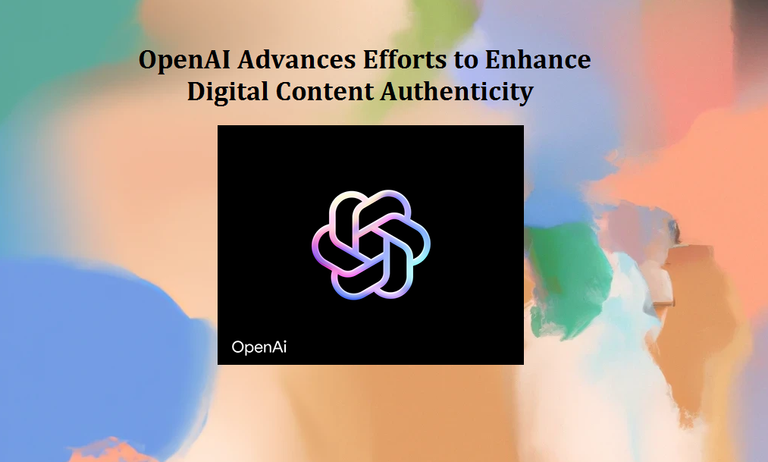KEY FACT: OpenAI is actively addressing the need for content authenticity in this digital age by developing advanced text watermarking and metadata techniques. They are integrating these into tools like DALL-E 3, enhancing image detection capabilities, and collaborating with industry peers through initiatives like the Coalition for Content Provenance and Authenticity (C2PA). These efforts aim to ensure transparency and trustworthiness in online content as AI-generated media becomes increasingly prevalent. However, there are no release plans for the product yet.

Image source: OpenAI
OpenAI Advances Efforts to Enhance Digital Content Authenticity
OpenAI is building a new “highly accurate” tool capable of detecting content generated by ChatGPT. In a blog post, the company mentioned it was working on various methods to detect content generated specifically by its products. The post was earlier published back in May and updated in August in response to an August 4 report by the Wall Street Journal concerning the release of the tools over internal debates.
We’re introducing new tools to help researchers study content authenticity and are joining the Coalition for Content Provenance and Authenticity Steering Committee.
This development has become necessary in an era where generative AI is transforming digital content creation, in a bid to ensure the authenticity of what we see and hear online. OpenAI is leading this charge by developing new tools and standards for content provenance, joining the Coalition for Content Provenance and Authenticity (C2PA), and implementing advanced methods like text watermarking and metadata usage.
OpenAI's focus is on enhancing text and image provenance and this will be achieved by developing robust text watermarking techniques that resist tampering, such as translation and rewording. Despite the accuracy of this tool, the challenge identified is the potential biases against non-native English speakers. The tool also offers the use of Metadata to cryptographically sign data that helps verify content origins without false positives, proving vital as AI-generated text proliferates.
OpenAI is also enhancing its image detection capabilities for image content. The new image detection classifier, now available for testing by researchers, predicts the likelihood of an image being generated by DALL-E 3. The integration of C2PA metadata into its tools like DALL-E 3, ensures edits and modifications are tracked transparently. This move aims to bolster trust and clarity in digital content’s origins. Early tests show high accuracy, distinguishing AI-generated images from non-AI ones, even after common modifications like cropping and compression.
OpenAI is making collaborative efforts and penning future directions concerning the Content Provenance tools. This, they seek to achieve by joining industry peers to contribute to the broader adoption of provenance standards. Specifically, OpenAI is launching a societal resilience fund with Microsoft to support AI education. Additionally, OpenAI’s Voice Engine incorporates audio watermarking to further ensure content transparency.
OpenAI has emphasized collective action among platforms, content creators, and intermediaries to retain and respect metadata, enhancing overall content authenticity.
With the success of this tool, OpenAI's Content Provenance tool would be the first internally developed system to rely on invisible watermarking and proprietary detection methods for content generated specifically by the company’s models.
Despite the sophistication of the innovation, OpenAI is still not sure when the tool will be released for public use linking the delay to related envisaged risks.
Our teams have prioritized launching audiovisual content provenance solutions, which are widely considered to present higher levels of risk at this stage of capabilities of our models.
With this development, the AI key players are gradually refocusing the provision of responsible AI systems.

If you found the article interesting or helpful, please hit the upvote button, and share for visibility to other hive friends to see. More importantly, drop a comment below. Thank you!
This post was created via INLEO, What is INLEO?
INLEO's mission is to build a sustainable creator economy that is centered around digital ownership, tokenization, and communities. It's Built on Hive, with linkages to BSC, ETH, and Polygon blockchains. The flagship application: Inleo.io allows users and creators to engage & share micro and long-form content on the Hive blockchain while earning cryptocurrency rewards.
Let's Connect
Hive: inleo.io/profile/uyobong/blog
Twitter: https://twitter.com/Uyobong3
Discord: uyobong#5966
Posted Using InLeo Alpha